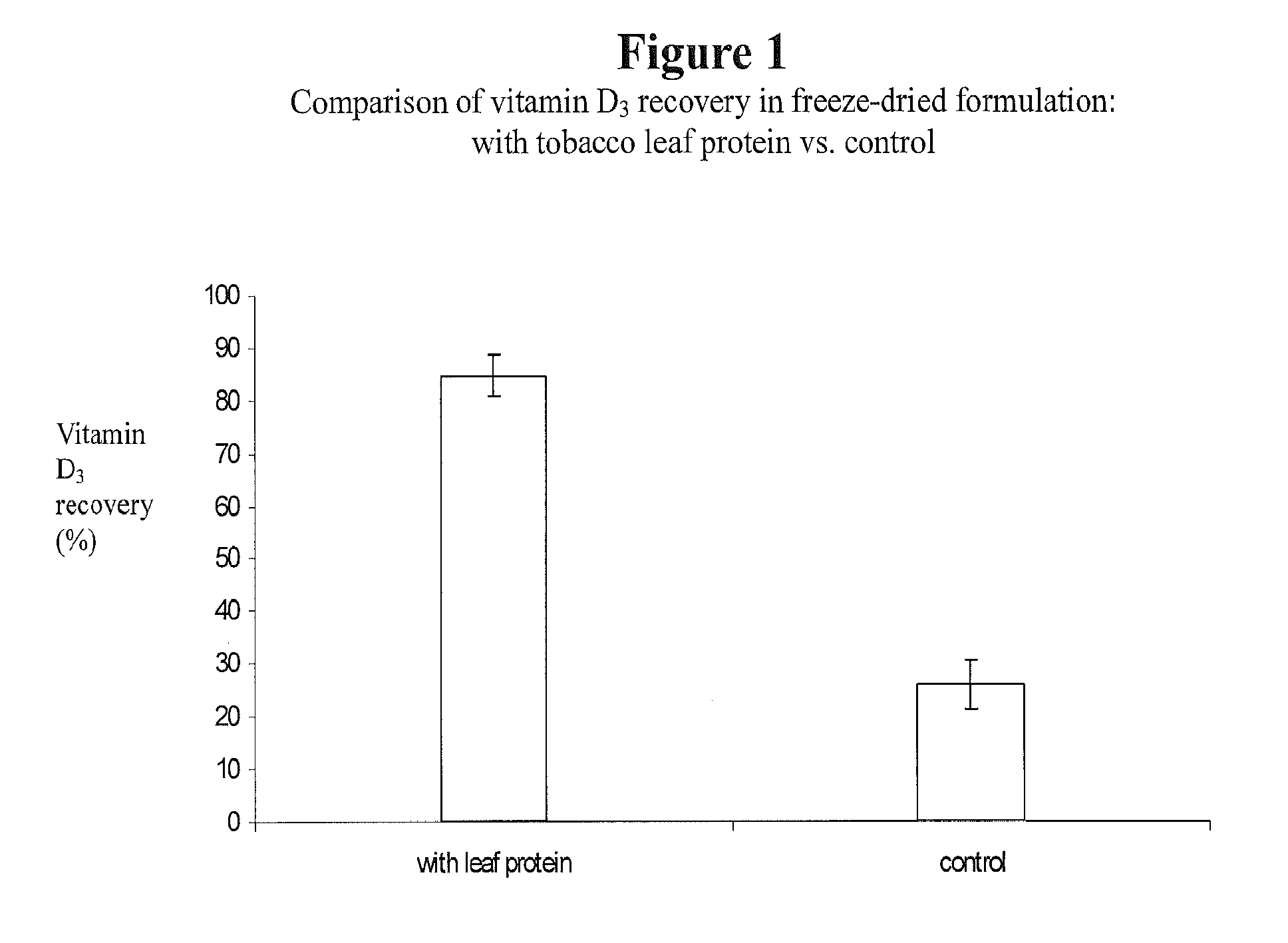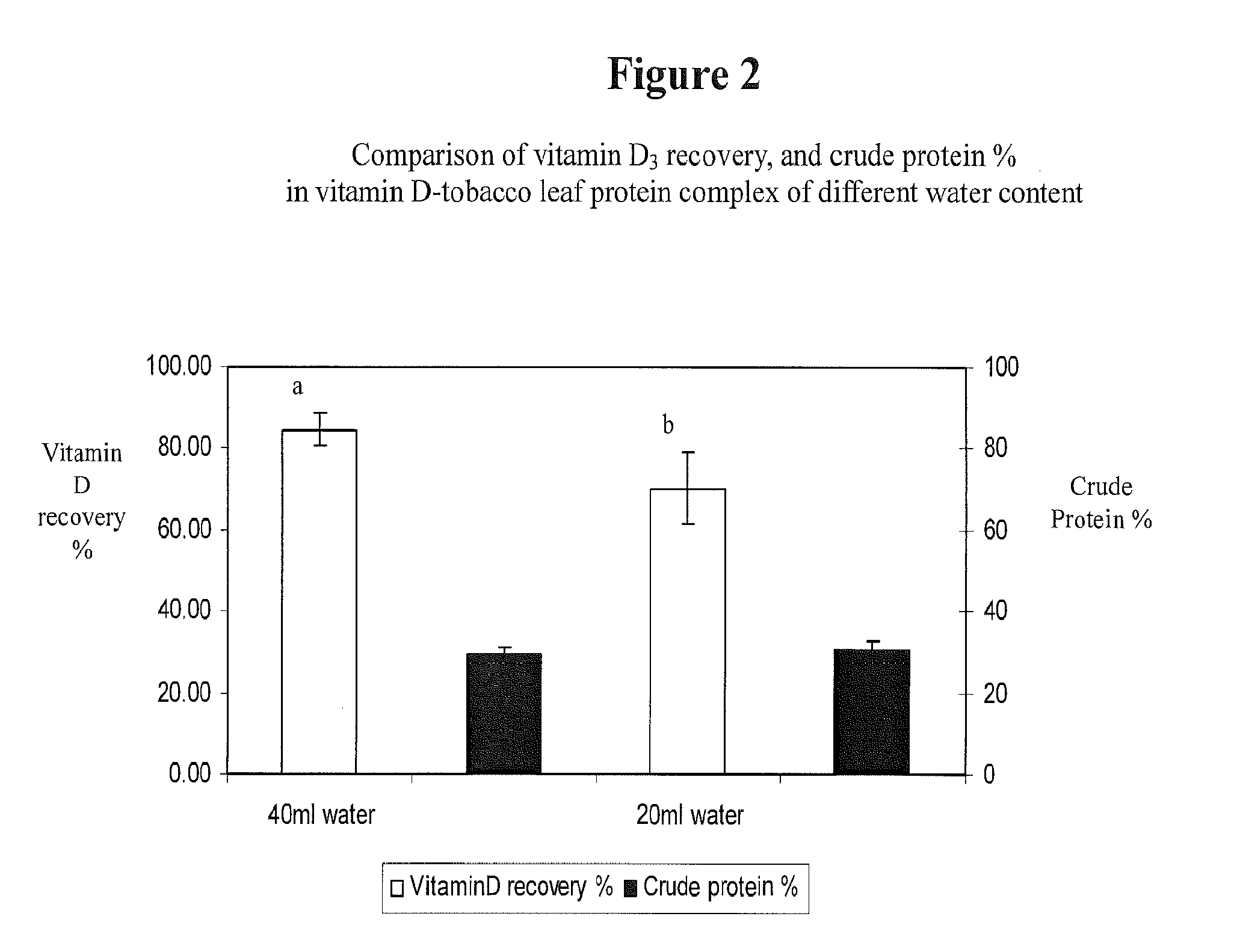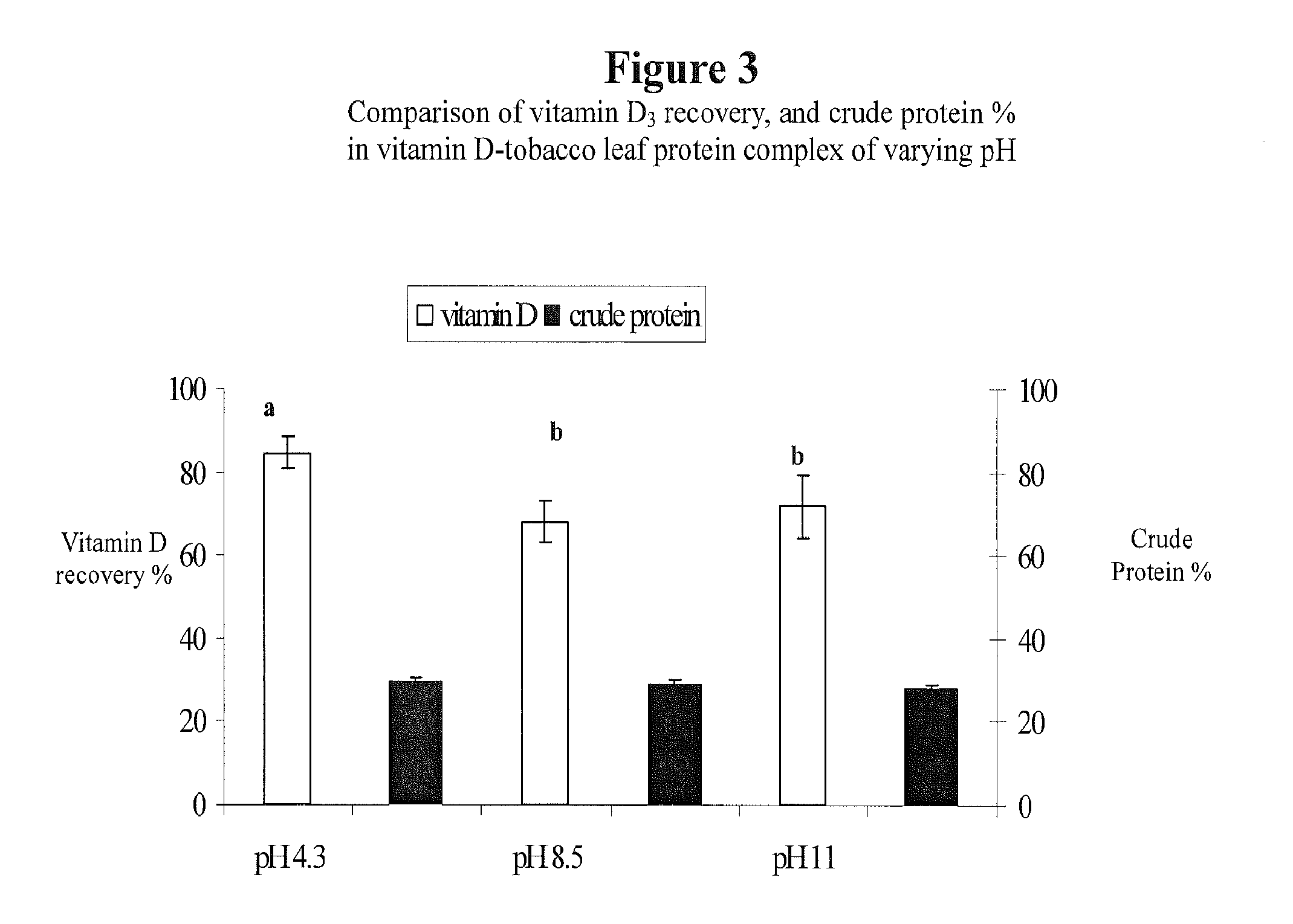Novel Composition Of Matter For Delivering Lipid-Soluble Materials, And A Method For Producing It
a technology of lipid-soluble materials and compositions, which is applied in the direction of drug compositions, plant/algae/fungi/lichens ingredients, and fatty acids and lipid-soluble pharmaceuticals into the human (or animal) body, can solve the problems of difficult to maintain lipid-soluble nutrients, difficult to deliver lipid-soluble nutrients, and high cost of microencapsulation materials, such as cyclodextrins
- Summary
- Abstract
- Description
- Claims
- Application Information
AI Technical Summary
Benefits of technology
Problems solved by technology
Method used
Image
Examples
example 1
[0057]Evaluation of different strategies for solubilizing leaf protein.
[0058]The purpose of this test was to evaluate different strategies for solubilizing the leaf protein. It is necessary to solubilize the leaf protein in order to remove residual pigments, fat content and other form a complex with the target lipid-soluble molecules.
[0059]Protein samples were subjected to solvent extraction with three organic solvents; hexane; acetone and methanol. Leaf protein powder prepared by the method of Lo et al. (2008) and Fu et al. (2010) has a water solubility value of 10.08±0.15 grams / liter (g / l). Hexane extraction of the protein powder yielded only a marginal increase in solubility of 10.82 g / l, whereas acetone extraction showed even smaller increase in solubility and methanol actually caused solubility to decrease. Based on these findings, the inventors did not utilize a solvent as pretreatment prior to mixing with vitamin D.
example 2
[0060]Effect of Water Content on Leaf Protein—Lipophile Complex
[0061]Leaf protein samples were derived from Maryland tobacco variety 609LA, a low-alkaloid variety containing 0.6 mg / g to 0.8 mg / g of nicotine, using the method described in Lo, et al. (2008) and Fu et al. (2010). One gram of leaf protein powder was placed in a 300-ml freeze-drying glass flask (F05657000, Thermoscientific, Pittsburgh, Pa.), followed by addition of either 20 ml or 40 ml of water and 4 ml of vitamin D3 in 99% pure ethanol (1000 ug / ml). The pH of the mixture was adjusted to pH 4.3 by gradually adding 1 M sodium hydroxide solution to the protein water solution prior to adding vitamin D3. This mixture was then magnetically stirred for 4 minutes before liquid nitrogen was added. Approximately 250 ml of liquid nitrogen was poured into the glass until the mixture appeared completely solid. The flask was then immediately closed with the lid and carefully placed in a thermally insulated bag filled with dry ice. T...
example 3
[0063]Effect of pH on Leaf Protein—Lipophile Complex
[0064]The inventors measured the effect of pH on the leaf protein—lipophile complex. They used the same preparation as described above in Example 2, except that they only used one water content level: one gram of leaf protein per 40 ml of water. They also prepared the leaf protein-vitamin D mixture described in Example 2 at three different pH levels (4.3, 8.5 and 11.0). As noted above, for pH adjustment, 1 M sodium hydroxide solution was gradually added to the protein water solution prior to adding vitamin D3.
[0065]The sample tested at pH 4.3 showed substantially higher recovery of vitamin D3 (84.6%±3.92%, w / w) than either of the two other treatments. (See FIG. 3). There was also a slight increase in the water solubility of the vitamin D-protein complex at pH 4.3 from 10.08 to 10.78 g / l (See FIG. 4).
[0066]In each of the three treatments, the crude protein represented about 30% of the vitamin D3-tobacco leaf protein complex.
[0067]It...
PUM
| Property | Measurement | Unit |
|---|---|---|
| pH | aaaaa | aaaaa |
| pH | aaaaa | aaaaa |
| solubility | aaaaa | aaaaa |
Abstract
Description
Claims
Application Information
 Login to View More
Login to View More - R&D
- Intellectual Property
- Life Sciences
- Materials
- Tech Scout
- Unparalleled Data Quality
- Higher Quality Content
- 60% Fewer Hallucinations
Browse by: Latest US Patents, China's latest patents, Technical Efficacy Thesaurus, Application Domain, Technology Topic, Popular Technical Reports.
© 2025 PatSnap. All rights reserved.Legal|Privacy policy|Modern Slavery Act Transparency Statement|Sitemap|About US| Contact US: help@patsnap.com



